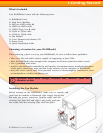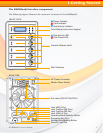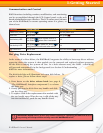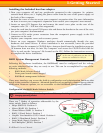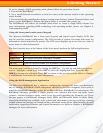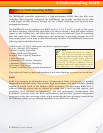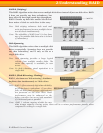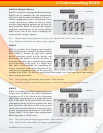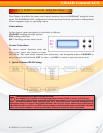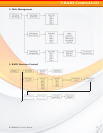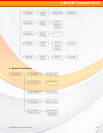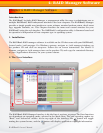
RAIDBank5 Owner’s Manual
14
Chapter 2. Understanding RAID
The RAIDBank5 controller subsystem is a high-performance SATA2 drive bus disk array
controller. When properly configured, the RAIDBank5 can provide non-stop service with
a high degree of fault tolerance through the use of RAID technology and advanced array
management features.
The RAIDBank5 can be configured to RAID levels 0, 1, 10, 3, and 5, as well as disk spans
and direct mapping. RAID levels other than 0 are able to tolerate a hard disk failure without
impact on the existing data, and failed drive data can be reconstructed from the remaining
data and parity drives. RAID configuration and monitoring is accessible through the LCD
front control panel or the built in web administration interface. The RAIDBank5 features the
following high availability functions:
• RAID Levels 0,1,10,3,5, disk spans, and direct mapping Support
• Up to 4 discrete LUN support
• Online Capacity Expansion
• Online RAID Level Migration
• Logical Drive Capacity Extension
• Array Roaming
• Automatic Drive Failure Detection
• Automatic Failed Drive Rebuilding
• Hot Spare Disk Drives
• Instant Availability/Background Initialization.
This section will help you gain understanding of how these functions can serve your needs best.
RAID
RAID is an acronym for Redundant Array of Independent Disks. It is an array of multiple
independent hard disk drives that provide high performance and fault tolerance through
support of several levels of the Berkeley RAID techniques. An appropriate RAID level is
selected when the volume sets are defined or created, and is based on disk capacity, data
availability (fault tolerance or redundancy), and disk performance considerations. The
RAIDBank5 controller makes the RAID implementation and the disks’ physical configuration
transparent to the host operating system, which means that the host operating system drivers
and software utilities are not affected regardless of the RAID level selected.
2-Understanding RAID
FYI:
The Berkeley RAID levels are a family of
disk array data protection and mapping
techniques described by Garth Gibson, Randy Katz,
and David Patterson in papers written while they
were performing research into I/O subsystems at
the University of California at Berkeley. There are
six Berkeley RAID Levels, usually referred to by the
names RAID Level 1, etc., through RAID Level 6.





